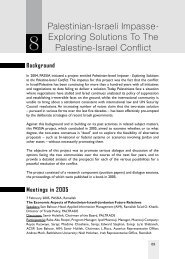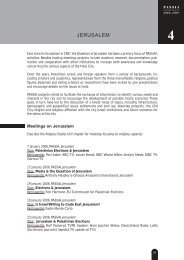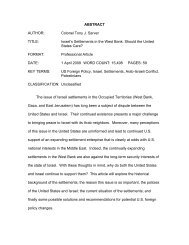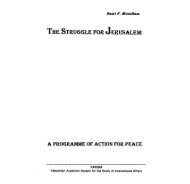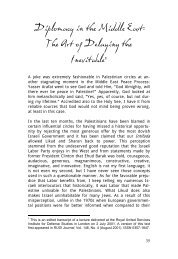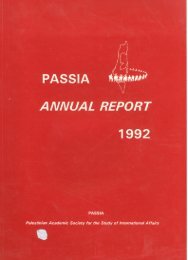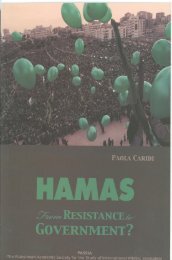FINLAND & PALESTINE Proceedings of a Joint Workshop
FINLAND & PALESTINE Proceedings of a Joint Workshop
FINLAND & PALESTINE Proceedings of a Joint Workshop
Create successful ePaper yourself
Turn your PDF publications into a flip-book with our unique Google optimized e-Paper software.
preted the grandiose, almost opulently decorated domed hall<br />
at Khirbet al-Mafjar, with its "acoustic vaults" and swimming<br />
pool, as a "frivolity hall," or "music hall,/I built especially to the<br />
personal tastes <strong>of</strong> al-Walid II.<br />
Stacks <strong>of</strong> ro<strong>of</strong> tiles and window frames were found in several<br />
rooms, as if placed there ready to be used by the builders, who<br />
then abandoned the palace, and left the unfinished materials<br />
where they were. The suggestion that al-Walid II was the patron<br />
<strong>of</strong> the "un-Islamic" buildings and decorations is behind the<br />
explanation by these scholars that the monument was never<br />
finished. Such a quick departure <strong>of</strong> the builders could be explained<br />
by the sudden death <strong>of</strong> al-Walid II in 743. 11<br />
Baramki's and Hamilton's basic interpretation <strong>of</strong> raison d'etre<br />
for Qasr Hisham, as an example <strong>of</strong> the dolce vita <strong>of</strong> an<br />
Umayyad elite, has been widely accepted. 12 For example, a<br />
recent detailed study <strong>of</strong> the "desert castle," Qusayr 'Amra, in<br />
Jordan, by Garth Fowden, leaves the reader overwhelmed by<br />
the interpretation that the only person in the Marwanid Dynasty<br />
willing to build a hot bath decorated in this manner can<br />
be the non-religious, pleasure seeking Caliph al-Walid 1J.13<br />
11 Hamilton, Khirbat al Mafjar, 9. The discovery <strong>of</strong>, not only these frames,<br />
but fragments <strong>of</strong> Umayyad window glass, are one <strong>of</strong> the valuable small finds<br />
that were published much later. N. Brosh, "Glass window fragments from<br />
Khirbet al-Mafjar," in: Annales du Congres de I'Association internationale<br />
pour I'Histoire du Verre 11 (Amsterdam, 1988: Association Internationale<br />
pour I'Histoire du Verre) 19-25.<br />
12 The theme is further expounded in R. Hillenbrand, "La Dolce Vita in Early<br />
Islamic Syria: The Evidence <strong>of</strong> later Umayyad Palaces," Art History 5 (1982) 1<br />
35. and R. Schick, "Archaeological Sources for the History <strong>of</strong> Palestine: Palestine<br />
in the Early Islamic Period: luxuriant legacy," NEA 61 (l998) 74-108.<br />
13 G. Fowden, "Late-antique Art in Syria and its Umayyad Evolutions," Journal<br />
<strong>of</strong> Ramon Archaeology 17 (2004) 283-304. The argumentation in this funda<br />
14



